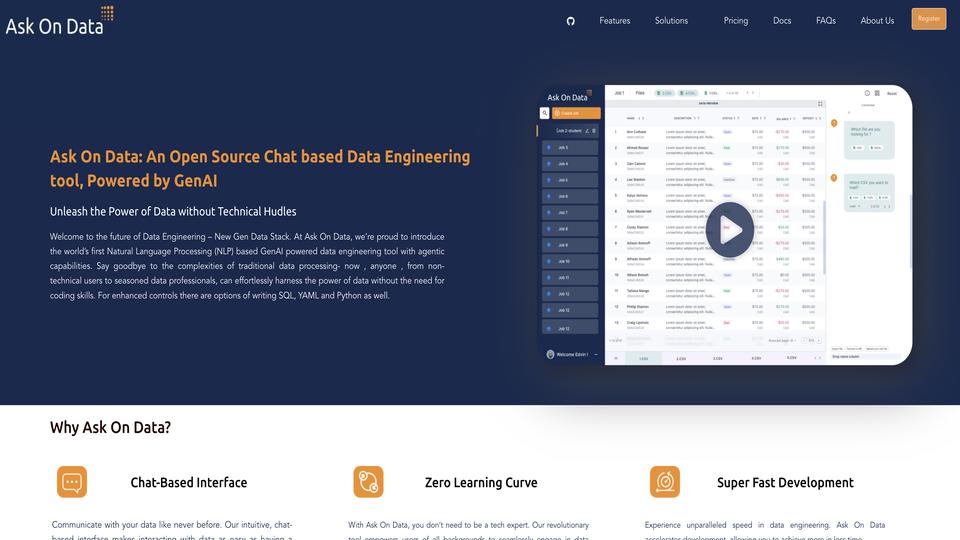Ask On Data
Visit WebsiteAn open-source data engineering platform that enables users to create and manage data pipelines through natural language conversations, making data engineering accessible to both technical and non-technical users.

Analytics of Ask On Data
- Total Visits
- 1.1K
- Avg. Time on Site
- 01:09
- Bounce Rate
- 0.0%
- Pages per Visit
- 6.0
Traffic Sources
What is Ask On Data?
Ask On Data is an AI-powered data engineering tool that revolutionizes the way organizations handle data pipelines. It uses natural language processing to allow users to create and manage data transformations through simple chat interactions, eliminating the need for complex coding while maintaining professional-grade capabilities.
How to use Ask On Data?
1. Register for an account on Ask On Data 2. Connect your desired data sources 3. Use the chat interface to describe your data engineering needs in plain English 4. Preview the transformations in real-time 5. Validate and adjust the generated pipeline as needed 6. Schedule and orchestrate your data jobs
Ask On Data Core Features
AI-powered chat interface for data pipeline creation
Real-time data preview and transformation validation
Comprehensive job scheduling and orchestration
Support for multiple data sources including databases, APIs, and flat files
Action history with undo functionality
Optional SQL, Python, and YAML editing capabilities
Ask On Data Use Cases
Automated data migration between systems
ETL pipeline creation without coding
Data cleaning and transformation workflows
Business intelligence data preparation
Machine learning data preprocessing
Real-time data integration projects
FAQ from Ask On Data
How does the chat-based interface work?
The interface is powered by fine-tuned LLM models that understand natural language commands. Users can communicate their data engineering requirements conversationally, and the system converts these instructions into actionable data pipelines.
Is it suitable for non-technical users?
Yes, Ask On Data is designed with a zero learning curve, making it accessible to users without coding experience while still providing advanced options for technical users who need more control.
What is the pricing structure?
The self-hosted open-source version is free. Enterprise versions are available with pricing based on data volume, with managed cloud hosting and additional features included.



